|
Evolution Live Events was tasked to design and build a giant replica of a 4000 year old Emirati ring on which is logo is based with in built water system and light.
The giant replica of the iconic Expo ring sat high up under the Al Wasl dome throughout the closing ceremony, reflecting the lights and scenes around it, before lowering in spectacular fashion over two protagonists as Norah Jones performed. The ring needed to be designed to hold a digital water curtain system, self-illumination with 120rm of embedded individually programable LEDs and was required to fly into the stage trap with a tolerance of around 20mm on each edge while supporting its own weight (up to 9tons) when it landed sub stage. The second feature awarded to Evolution was to design and build the rolling arches which was to be placed as background for world renowned artist such as Christina Aguilera to perform on. §The arches: 8 units of varied sizes served as rolling backdrops on the welcome stage at Al Wasal. A major consideration in designing the arches and their base structure was the need to transport them almost 1km over un-levelled flooring, gravels, paver stone and other surfaces. As the curtain comes down on Expo 2020 Dubai the final showdown of its closing ceremony unfolds beneath the Al Wasl Dome. With a fantastic set of performances planned we were given the opportunity to build the show stopping EXPO ring – a spectacular showcase of lights and water. This might have been the most daunting task because the workload on both us and the workshop was going to be immense. In collaboration with Aquatique Show, who were going to handle the water show aspect of this ring, we were given the task of integrating the lights in the form of LED rings that operate on wireless DMX. This might have been the most daunting task because the workload on both us and the workshop was going to be immense. In collaboration with Aquatique Show, who were going to handle the water show aspect of this ring, we were given the task of integrating the lights in the form of LED rings that operate on wireless DMX. We had a few things to consider, first both power and DMX had to be wireless as this structure was to be suspended above the stage. This would mean that we had to get a wireless 24V battery with a high enough capacity to work for a long time. Fortunately, Aquatique helped us source them on time. Wireless DMX connections would be taken care of from the client’s side, with an onboard EXPO technical team we would work closely with. The main ring was to be broken down into 10 segments. Each segment included a top panel and a bottom panel which had 4 LED rings of variable sizes, and a designated control panel designed by Evolution. We also decided to use a silicone LED profile to fit within each ring, this way we get flexibility and since the profiles were also waterproof, we could avoid any unnecessary moisture development on the LED strips. The next task was to develop a fully enclosed control box to power the LEDs and make sure everything was waterproof. We broke down the task of developing the control box, the connector looms and connectors outputs to the top and bottom LED panels. A 400*200*100 junction box was repurposed to make our control panel. We used anti-static mats to avoid static discharge within the box. Each LED ring would be controlled a DMX controllable LED decoder wired to a 24-pin male army connector. We also provided a 4-pin army connector for power and ethernet wall jack to transfer DMX data to the decoders. Each decoder was addressed and labelled to utilize an entire designated universe. Moreover, each control box was also rigged with two hook clamps and a safety wire, so they could be placed with the metal frame of the main ring, without slipping or falling off. Output connectors we made to join all the connection of the LEDs with the rings to another male 24-pin army connector. We used RGBW cables, heat shrunk and glued to the bottom of each panel with fiberglass. To bridge the connection from the control box to the LED output connector, connector looms were assembled. The Connector Looms were put together by wiring two 24-pin female army connectors with four 5 core wires all loomed together with a braided sleeve. Each loom was 10 meters long to accommodate for space in case the output connectors were far from the control box. On setup day, as the outer cladding of the ring was placed, we simultaneously hung the control boxes in place. Next, we connected each box to the 24V battery (provided by Aquatique) for power and connected a 10-meter long ethernet cable from one box to the next for the DMX data flow. The bottom panel was placed first, and the output connector of each bottom panel was connected to the control boxes with the loom connector, similarly done for the top panel. Once all the panels are set and powered, we used an RDM to check all the connections of the LED rings. Each ring had 4 channel (RGBW), once a specific channel coinciding with the ring is triggered the LED ring would light up with the color assigned to the channel. |
|

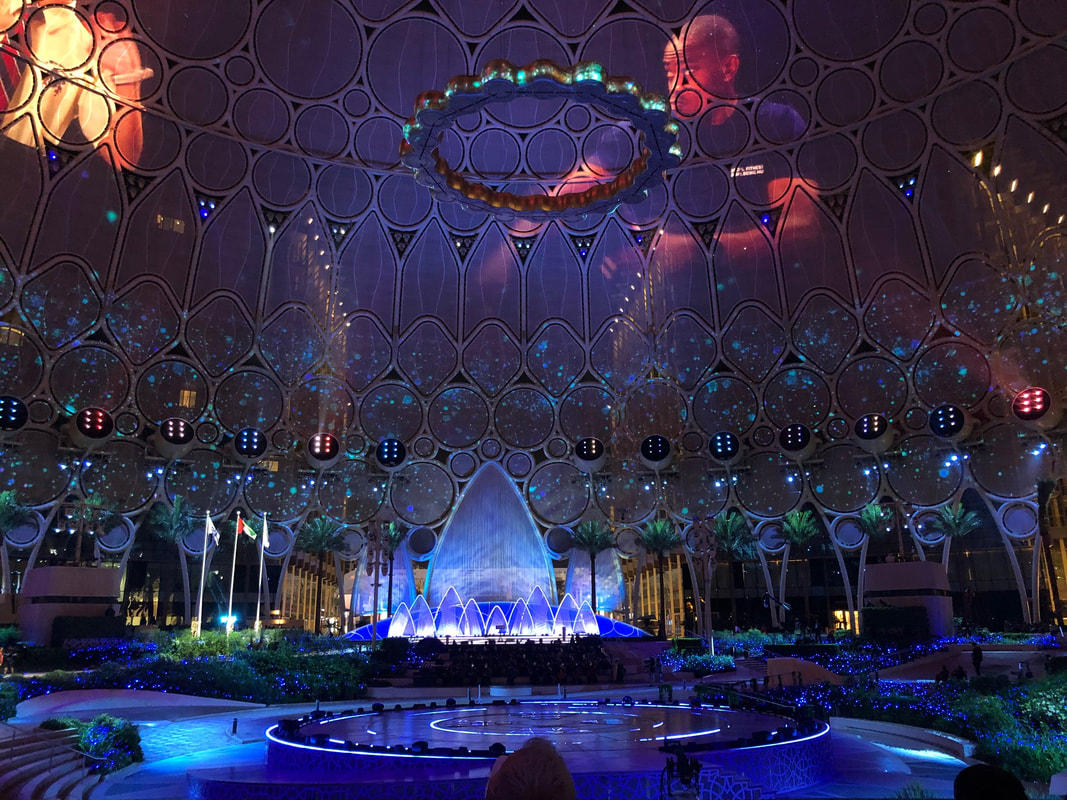
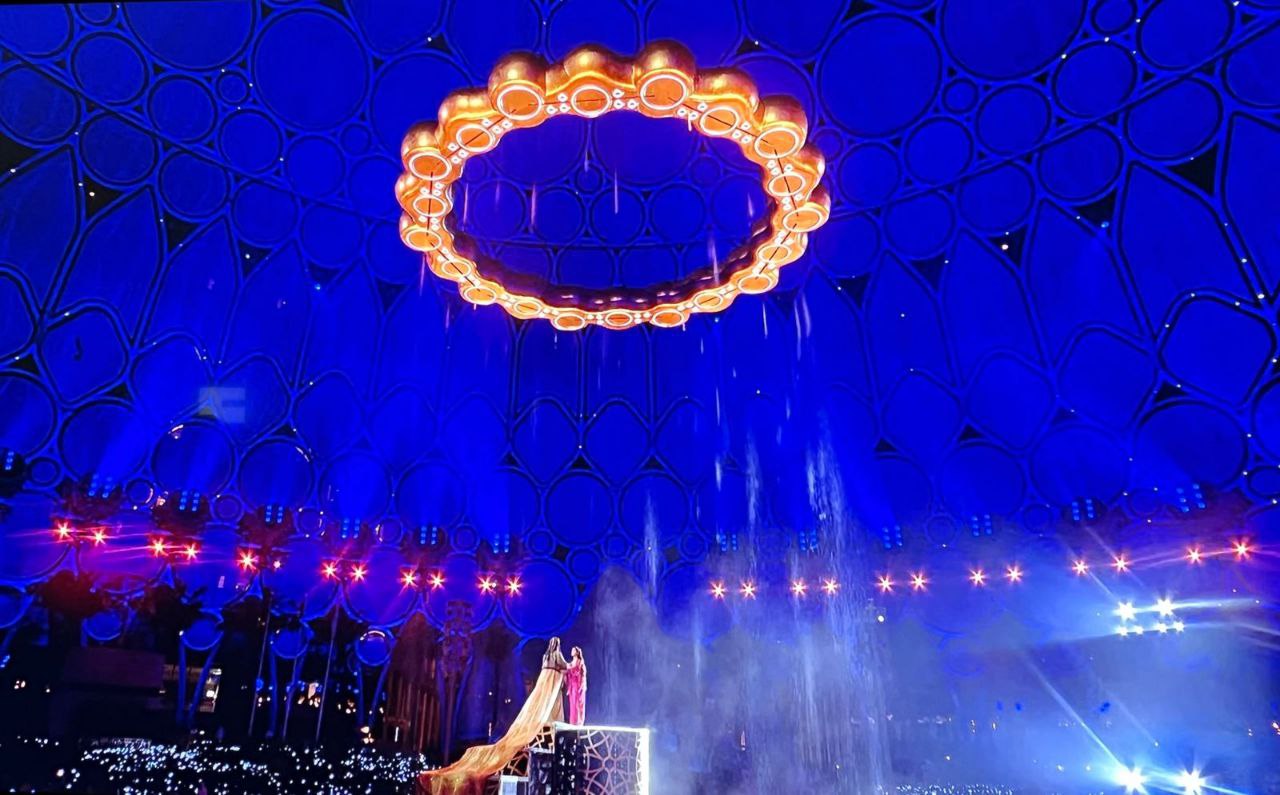
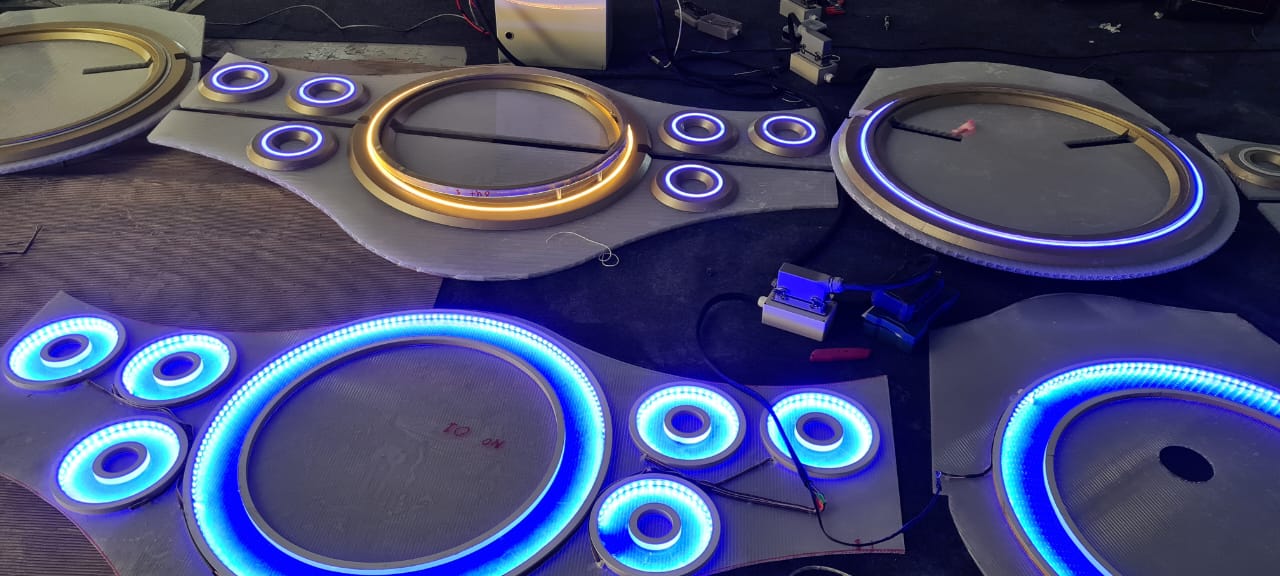
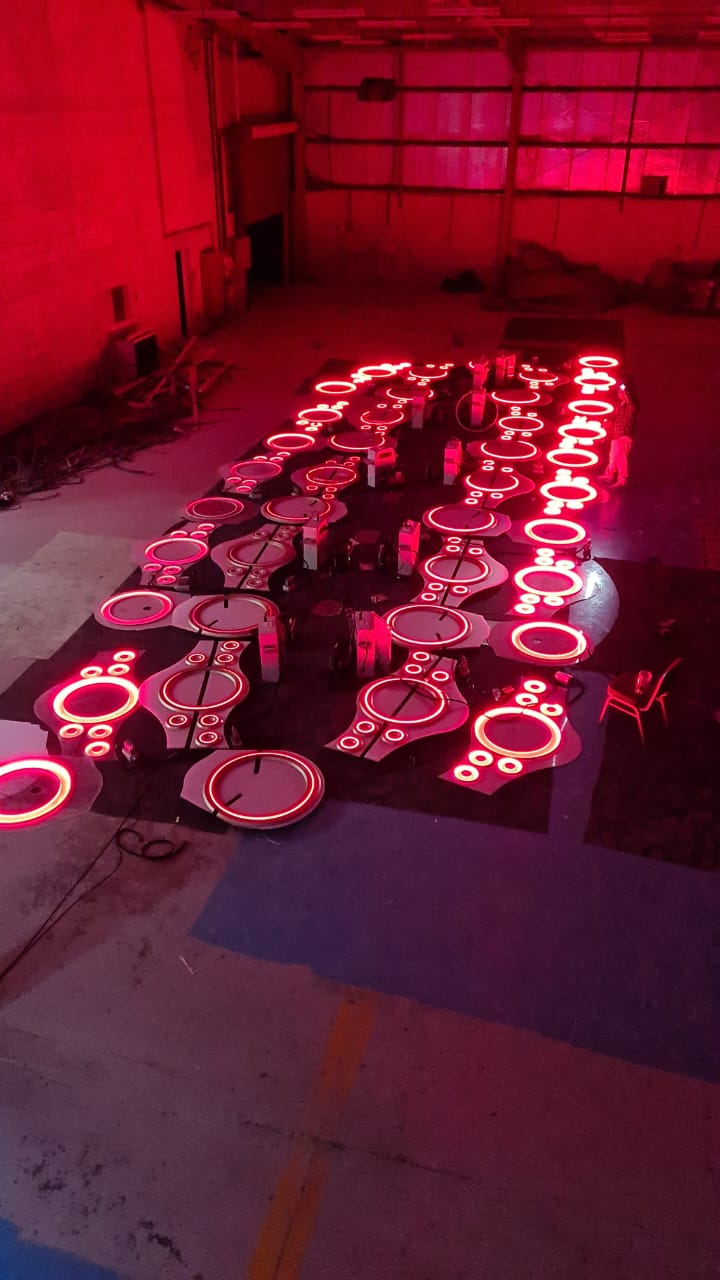
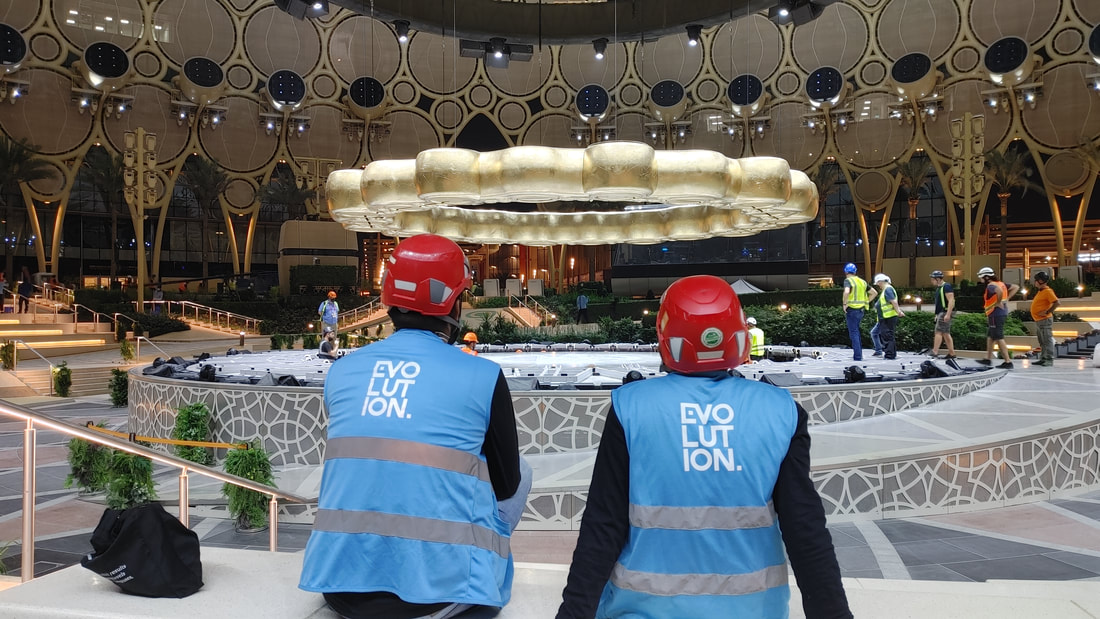
 RSS Feed
RSS Feed
